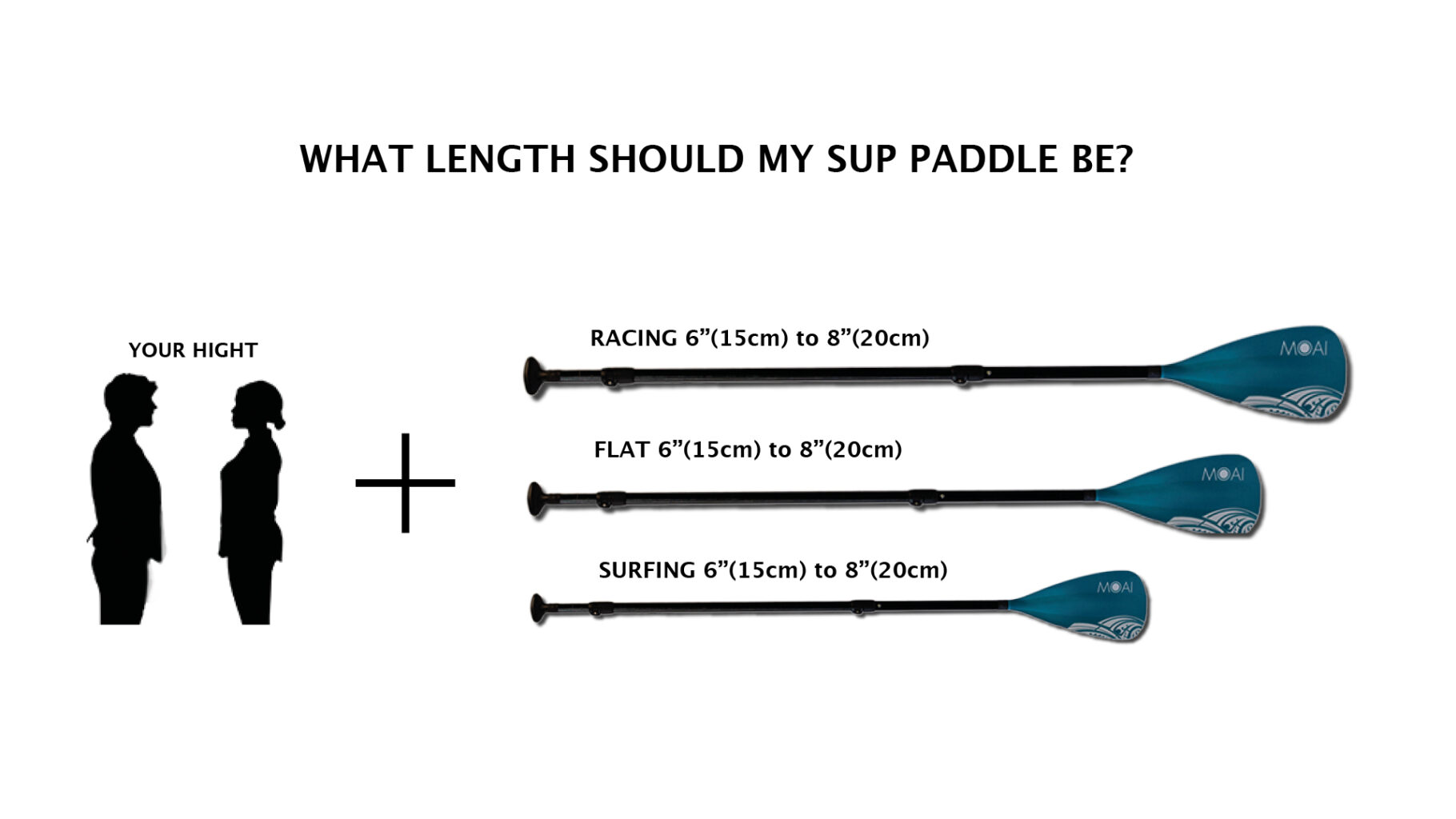How to Choose SUP Paddle?

When purchasing each package with a MOAI board, an aluminium paddle is included. But what if you want a paddle made of a different, maybe lighter material? Remember that in our offer you will find paddles made of various materials, such as: glass fiber, aluminum, bamboo + glass fiber/carbon, carbon. Each of our paddles is adjustable, so you can adjust them perfectly to your size! If you still have doubts about the right size, in this post we have a guide just for you.
A paddle made of carbon is the lightest, so you won’t get tired quickly. Generally, a lightweight paddle is preferred, but keep in mind that you usually pay more for less weight. If you only paddle a few times each year, weight doesn’t have to be your top concern.
The size, shape, etc. of the paddle blade define how the blade moves through the water. So choose a blade based on the type of paddling you do, your body type and personal preference. Usually, the larger you are, the bigger you’ll want your blade to be. If you’ll be doing something other than recreational touring, such as surfing or racing, you may need a different length. SUP surfers usually choose a paddle that’s a bit shorter than touring length, while racers typically go a bit longer.
Do you know when a paddle is really good? When you forget that you’re using it on the water. Do you want to take a closer look at the materials we offer?
- Undeniably, our paddles made of bamboo + fiberglass / carbon have a chic look, the bamboo blade is setting apart the rest of the paddle and contrasts with the fiberglass / carbon shaft in a visually striking way. Most of our paddles are 3-piece (including this one), so this model is a great option when you’re on the go.
- As we said before – each board in the package has an aluminum paddle. Aluminum is an affordable material often used in the paddle shafts. While it’s not as stiff as fiberglass or carbon, it’s lighter than wood. Our Aluminum SUP Paddle is a great value telescopic paddle for stand up paddle boarding for beginners.
- Glass fiber has been around since the 1700s, when it was used to decorate high-class ornaments. Later in the 1840s glass was woven into a fabric for clothing. Centuries later and look – we have a glass fiber paddles! This material is perfect for paddles because it’s very light, not as light as carbon, but still very good.
- Sir Joseph Wilson Swan first created carbon fiber in 1860 to use in an early incandescent light bulb. In 1879, Thomas Edison used cellulose-based carbon fiber filaments in some of the first light bulbs to be heated by electricity. Their high heat tolerance made them ideal electrical conductors. Additionally, improved manufacturing processes have aided in a decrease in production costs. These improvements in strength, elasticity, and cost led engineers in the 1990s and 2000s to finally fully understand the vast potential of carbon fiber in a variety of manufacturing applications, making it a favorite design choice today. But what about paddles? Well, as you already know, carbon is a very light material, the best possible material to create a paddle. It’s the lightest, most rigid, and best performing material. Because of it’s ultra-high performance qualities, light weight, and the manufacturing expertise required to shape carbon, it’s also the most expensive option.
We hope that we have explained the subject of paddles to you enough. When you take these words into consideration, you’ll end up with the best stand up paddle for you.


